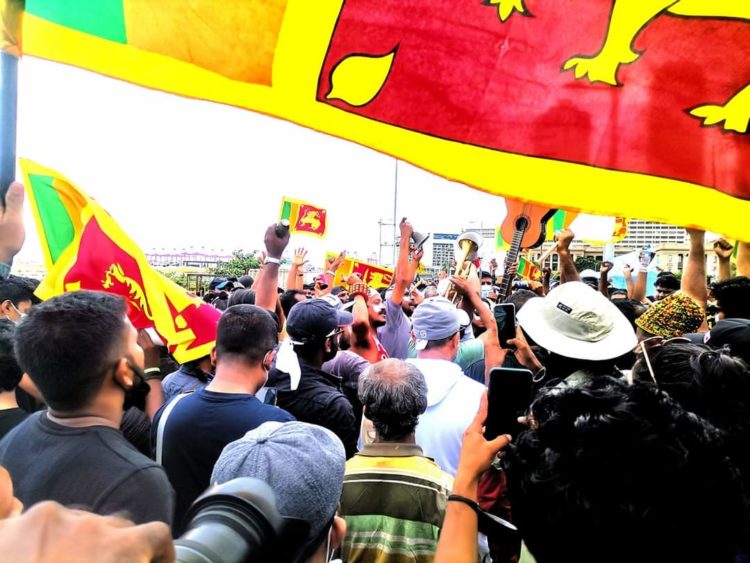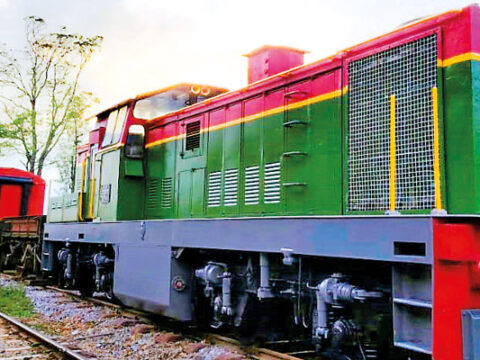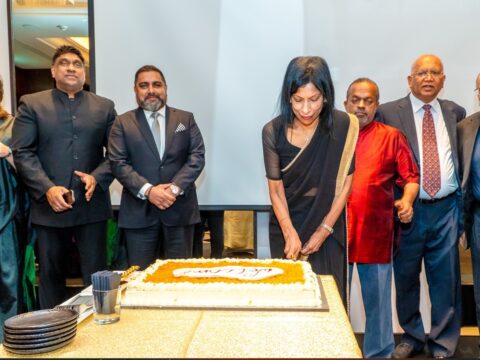COLOMBO: After weeks of upheaval over Sri Lanka’s economic crisis and growing resentment to his rule, President Gotabaya Rajapaksa offered the public a sacrifice, urging almost his entire cabinet, including several family members, to resign en masse while promising reform.
On Monday, Sri Lankans responded unequivocally, defying Mr. Rajapaksa’s state of emergency to turn out for protest rallies. “Gota, go home!” they chanted, repeating a refrain urging the president to step down and return to the United States, where he was a citizen. They promised to march until he personally left office.
Mr. Rajapaksa and his family have been notoriously unhesitant to use threats and violence to silence critics, stretching back to the country’s three-decade civil war that ended in 2009. Now, the widespread defiance of his government’s orders to stay home set up a showdown in which the looming question is whether Mr. Rajapaksa will retreat or respond with characteristic force.
Already there are signs of the latter.
On Thursday, the anger directed at the president reached his doorstep, as protests outside his residence in Colombo turned violent.
The police used tear gas and water cannons on the crowds, and arrested dozens of people, including journalists.
Human rights groups including Amnesty International said many of those detained had been tortured in custody.
Soon after the protests, Mr. Rajapaksa’s government imposed a state of emergency on the island, giving security forces sweeping powers of arrest and making it illegal for people to leave their homes.
Over the weekend, hundreds of people were arrested in Sri Lanka’s western province, which includes the capital, Colombo, for violating the curfew.
Even more demonstrators took to the streets on Sunday; and on Monday, some 2,000 people broke through barricades attempting to reach one of the prime minister’s residences, located about 125 miles outside Colombo. They were repelled with tear gas and water cannons.
The scope and energy of the protests across Sri Lanka suggested that Mr. Rajapaksa’s cabinet reshuffle has done little to assuage demands that he step down.
At least five rallies took place in Colombo, while demonstrators also rallied in the hillside city of Kandy, about 90 miles east of the capital; in the tourist-friendly beaches of Galle, about 90 miles south; and in Chilaw, about 50 miles north, in a province governed by a former Navy commander close to the Rajapaksas.
“We don’t know who will come into power next, so our futures are uncertain. But at least we are fighting for it. I’m glad that so many people are voicing their anger,” said Rashika Satheeja, 42, who works in advertising in Colombo and was among hundreds demonstrating at the city’s Independence Square.
The protesters vow to continue.
“The current situation is a complete repudiation of the Rajapaksas. The people have no other call than to ask them all to go, to leave politics, because they have been greedy, incompetent and they cannot govern,” said Paikiasothy Saravanamuttu, executive director of the Colombo-based Center for Policy Alternatives.
“It’s an uncompromising word from the ground that the Rajapaksas must go,” he said.
Once, the Rajapaksas commanded deep support among Sri Lankans, as the family was hailed for ending the country’s civil war and creating an economy that became a model for other nations seeking to rebuild.
Now, for the president, the cost of acceding to the public’s demands to step down may seem intolerable. In California, where Mr. Rajapaksa lived before returning to run for president in 2019, he faces civil charges related to atrocities committed when he was defense secretary, during the brutal final phase of Sri Lanka’s civil war.
During his two and a half years as president, he has assumed greater powers through a constitutional amendment, and halted criminal investigations of himself and his family. But his immunity from prosecution goes the moment he does, analysts say.
“People are saying, ‘Gota, go home,’ but he can’t go home because there are too many cases against him,” said Murtaza Jafferjee, a director of the Advocata Institute, a think tank. “If he’s no longer head of state, all the protections go away.”
Still, though Sri Lankans have been enduring up to 13 hours of daily power cuts during the hottest time of the year, long lines for fuel and shortages of food staples like milk powder and rice, their resolve is only likely to harden, analysts say.
The problem for the Rajapaksas is that there is no easy fix to the economic woes plaguing the island.
The stock market stopped trading after a sharp drop in the benchmark share price index on Monday. The Sri Lankan rupee depreciated further, having fallen 33 percent against the dollar since the beginning of the year. And the government is out of money to import much-needed goods.
A bad debt habit that began during the decade-long presidency of Mahinda Rajapaksa, Gotabaya’s older brother, had been left largely unaddressed by the time two catastrophes gutted Sri Lanka’s all-important tourism industry: the Easter terrorist attacks in 2019 that killed more than 250 people, and the coronavirus pandemic.
Gotabaya Rajapaksa’s government responded to the blows by cutting taxes and borrowing even more, adding to a debt load that his brother had taken on to finance big infrastructure projects that still are not profitable.
Billions of dollars in debt payments are coming due, and many analysts are predicting a default. In the meantime, the government has too little foreign currency to import essentials like medicine, food and fuel, causing shortages, lengthy power outages and unprecedented suffering across the island nation.
Early on Monday, Mr. Rajapaksa invited opposition party members to join his cabinet, but none took up the offer.
Harsha de Silva, an economist seen as a possible replacement as finance minister and a member of the opposition Samagi Jana Balawegaya party, said he would not join the government before an election could be held.
“I won’t accept a ministry without a fresh mandate. We need a proper team to do this. We need a new mandate,” he said.
Even political allies of Mr. Rajapaksa have rebelled. Several political parties in his governing coalition, which has a two-thirds majority in Parliament, have demanded that he appoint a caretaker government consisting of all 11 parties represented in the Legislature.
Among them, the Sri Lanka Freedom Party announced that it would quit the government as of Tuesday.
“We will be sitting independently in Parliament from tomorrow. We hope to be part of an interim government, but we have to decide how we are going to work according to the demands of the people,” Dayasiri Jayasekara, the party’s general secretary.
He went on to say that a snap election was not an option given the current state of the economy, because the government could not afford the cost to run one.
“We must form an interim government and find a solution to economic woes,” he said.
After his initial resistance, President Rajapaksa said last month that the government would seek assistance from the International Monetary Fund, but any financial prop would take several months at least to execute, said W.A. Wijewardena, the former deputy governor of Sri Lanka’s central bank.
“What should be done right now, whatever government is to be formed after the fall of the present administration, is to come to the people and tell them the truth,” Mr. Wijewardena said. “We are in a great pain now, and that pain has to be borne by all of us, and we have to sacrifice in order to build the economy back.”
© New York Times




